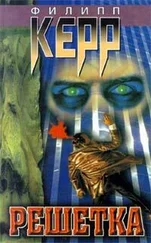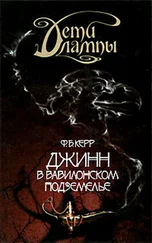As Mephistopheles remarks in making his pact with Faust, blood is a juice of the rarest quality.
To return to the rather more mundane level of blood banking, today it is something very different from how it was originally conceived, when the field was dependent upon one relatively simple and selfless act — a healthy person taking the time to share his or her good health with others by donating a pint of blood. The power of blood and its capacity to rejuvenate a human being is first mentioned by Ovid in his account of the legendary Medea and Aeson, father of Jason. [17] See Ovid’s Metamorphoses, I, Book VII. Cf. Herodotus in his account of how a Greek mercenary army in the pay of the Egyptians took the blood of the sons of their enemy Palmes, mixed it with grape juice, and then drank the mixture to give them strength and courage.
When Jason returns from his labors, he finds his father close to death and is persuaded to help renew his life by giving blood, which Medea mixes into a magic brew and then transfuses into the old man’s veins, with wondrous effect. But history tells us that the first attempted transfusion took place in 1492, when young priests donated their blood in a vain and misguided attempt to prolong the life of the morally worthless Pope Innocent VIII. He died, of course. The succeeding centuries were witness to many other failed attempts to transfuse blood. John Aubrey describes in his Brief Lives how in 1649 Francis Potter, inspired by Ovid, attempted to transfuse the blood of two hens. And in Samuel Pepys’s diary entry for November 21, 1667, he describes the first English attempt to transfuse blood into a human being, done by Richard Lower upon one Arthur Coga. Unfortunately the blood of a young sheep was used — Coga washed in the blood of the lamb, so to speak: Coga survived, although other patients, themselves the subject of earlier experiments in France, were not so fortunate. It was largely as a result of these French experiments [18] Blood transfusion was also a subject of satire. For example, see Alexander Pope’s Essay on Criticism, 7711: ‘Many are spoil’d by that pedantic throng, / Who with great pains teach youth to reason wrong. / Tutors, like Virtuoso’s, oft inclin’d / By strange transfusion to improve the mind, / Draw off the sense we have, to pour in new; / Which yet, with all their skill, they ne’er could do.’
during which the patients died, that blood transfusions were not attempted again until the nineteenth century, when doctors even tried to transfuse patients with milk. Needless to say, they all died, too. It was 1901 before Karl Landsteiner described the ABO blood group system that made transfusions theoretically possible, and the latter half of the Great War before transfusions with citrated blood were being carried out successfully, as a routine method of dealing with hemorrhage. Several more decades were to pass before new diluents, anticoagulants, and preservative solutions significantly helped improve the science of blood storage to such an extent that transfusion therapy became almost routine.
No longer.
The present century has seen the world devastated by a fatal pestilence of which blood has been, to borrow a phrase of Edgar Allan Poe’s, the Avatar and seal. [19] ‘The Masque of the Red Death,’ by Edgar Allan Poe, 1842.
The disease — merely the latest in a long line that has plagued the human race since man first started to domesticate animals, an agricultural revolution that occurred some ten thousand years ago — was human parvovirus II, also known as slow HPV2, or simply P2. This is a mutant and slower version of so-called fast HPV1, which was itself a mutant version of a relatively mild virus called B19, whose precise chemical structure was first described [20] When B19 was first discovered in the serum of asymptomatic blood donors as a cause of false-positive results in CIE tests for the detection of hepatitis B virus surface antigen, it was one of only two known human parvoviruses. B19 takes its name from the code number given to one of the serum samples in which the virus was initially found.
almost a century ago, in 1983.
Devastated: It bears repetition. The exact numbers will probably never be known, but it has been conservatively estimated that since 2019, HPV1 and HPV2 have killed as many as five hundred million people, making HPV arguably one of the most successful viruses of all time.
Viruses are man’s only real living competitors for dominion of Earth, for it is increasingly certain that antiviral antibiosis will never be achieved: Sharing the same genetic and metabolic machinery as man, their fate is inextricably bound up with his own. And like all living organisms, viruses have their own taxonomy, which is what biologists call the never-ending classification of their families. In Anna Karenina, Tolstoy wrote that happy families are all alike. At a fundamental level, the same is true of viruses: Each family has the same biological imperatives of survival and reproduction as any human family. Infection is an ancient event, basic to life. Without infection, evolution would have been impossible.
The family Parvoviridae constitutes three genera which between them infect a wide variety of host species — everything from mink to man. The viruses themselves are small, icosahedral organisms with genomes of single-stranded DNA. It is the third genus of Parvoviridae, the autonomous parvoviruses, capable of independent replication provided the host cell is in division, with which we are here concerned. Autonomous parvoviruses are so called because they do not require the presence of a helper virus for replication. B19 was one such autonomous human parvovirus.
For most normal people the consequences of infection, spread from respiratory tract to respiratory tract, were wholly asymptomatic; however, in symptomatic cases the illness caused was mild and similar to other common virus infections in causing fever, rash, and glandular enlargement (indeed it was often mistaken for influenza). Typically, B19 infected the red-cell series, but could also infect the white-cell series and the megakaryocyte series, causing transient, mild lowering of the numbers of red cells (erythrocytes), white cells, and platelets. Hence the virus caused real problems only for those with vulnerable bone marrow, such as people suffering from hemolytic anemia, in which any interruption of the activity of an already overworked marrow could result in an aplastic crisis. Affecting hemoglobin concentration, and causing the disappearance of reticulocytes from peripheral blood and the absence of red blood cell precursors in the bone marrow, this transient event would last from five to seven days, presenting patients with symptoms of acute anemia, namely chronic fatigue, shortness of breath, pallor, lassitude, confusion, and sometimes congestive cardiac failure. Blood transfusion was often required before the bone marrow could recover, reticulocytosis could take place, and hemoglobin concentration could return to normal values. Twentieth-century studies showed that 90 percent of all cases of aplastic crises in patients with chronic hemolytic anemia were due to B19 virus infection. No effective antiviral chemotherapy for B19 infection was ever developed; perhaps, if it had been, things might have been very different.
The avidity with which any virus can cause clinical disease may vary. Like man himself, microbes have proven themselves to be adaptable and inventive, proficient in reproducing and evoking quickly and in adjusting to new hosts and conditions. For example, consider the variation in severity of the various influenza [21] The word ‘influenza’ is of mid-eighteenth-century Italian origin. It meant ‘influence of a miasma,’ or ‘of the stars.’
outbreaks over the years. This is a virus which often undergoes major genetic shifts in its surface proteins, thus inflicting a ‘new’ virus on the world at intervals of approximately two years, to which there is little or no immunity in the world population. Such mutations were responsible for a number of flu pandemics, but none more virulent than the Spanish flu of 1918, which, in only six months, killed as many as thirty million people — twice the number that died during the four years of the Great War. This extreme example shows the inherent potential among viruses to change their aggressiveness as the result of spontaneous mutation, although mutations may also occur as the result of outside influences such as chemicals, radiation, bacteria, or even other viruses. The majority of such mutations are corrected rapidly by DNA or RNA-repair enzymes, and do not have the chance to alter the virus activity. Even if not repaired, it is unlikely that the mutations would have an effect on the structure or behavior of the virus in an immediately obvious way. Only one in a million mutations might have a damaging effect on the virus such that it becomes unable to infect cells, or is incorporated in the host cell’s DNA. Conversely, a similar number of mutations might easily result in increased avidity of binding to host cells or more efficient replication of viral products and hence more serious infection and illness. Mutation may also result in a change in the tropism of the virus — in a tendency to attack a cell type not previously affected.
Читать дальше












